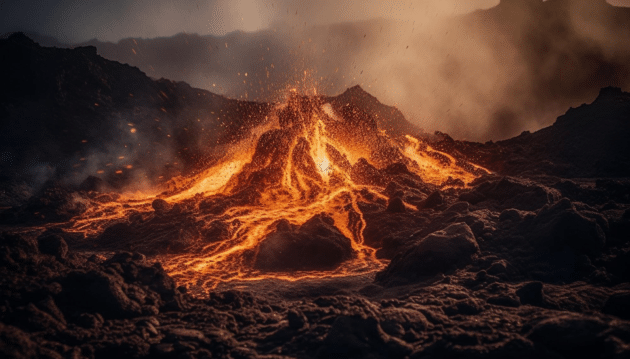Hundreds of thousands of Americans are bracing for the worst as scientists predict that a nearby volcano will erupt.
The 11,070-foot-tall Mount Spurr in Alaska, which is close to Anchorage, the state’s largest city, looks ready to erupt, despite the fact that 169 volcanoes in the 50 states of the US are designated as “active.”
Just under 2,000 feet taller than the Yellowstone supervolcano, the volcano is visible to Alaskans residing 81 miles away in the coastal city on a clear day.
The Alaska Volcano Observatory (AVO), the regulatory body that routinely monitors 90 of the 140 volcanoes believed to be on the state, reported that during February and March, more than 100 earthquakes had taken place beneath Mount Spurr each week.

Additionally, it stated that more than 3,400 earthquakes have struck the area around the volcano since April 2022.
AVO scientist Matt Haney explained the potential eruption appearance in an interview with Alaska Public Media.
People in Anchorage would probably not be able to hear a Spurr eruption like the ones that occurred in 1953 and 1992, but those who were near the volcano would be able to hear it. But being that close would not be wise,” the scientist stated.
Because volcanic ash particles rub against one another, ash-producing eruptions can create volcanic lightning in the ash cloud. This lightning can then produce thunder, which can be heard farther away.
“We have explosive eruptions that break up magma and shoot ash 50,000 feet into the atmosphere most of the time.”
Mount Spurr exploded three times in 1992—in June, August, and September—as opposed to just once 39 years prior.
“The second of the three explosions occurred on August 18, 1992, when winds were blowing to Anchorage. The ash was carried over Anchorage, and ashfall ensued on Anchorage,” Haney continued.
Since the last major eruption was roughly 43 years ago, ash would most likely fall over Anchorage and the other settlements.
Alaskans who live close to Mount Spurr have begun to gather safety goggles, latex gloves, face masks, gas masks, and plenty of water in preparation for the upcoming eruption.
According to the International Volcanic Health Hazard Network (IVHHN), breathing in volcanic ash can cause respiratory conditions, severe asthmatic health issues, and irritation of the eyes, nose, and throat.
Here’s a brief overview of the history of volcanoes and volcanology:
1. Early Observations
- Ancient Cultures: Many ancient civilizations were aware of volcanoes and often linked them to gods or supernatural events. For example, the Romans believed Vulcan, their god of fire, lived beneath Mount Etna.
- Pompeii and Herculaneum (79 AD): The eruption of Mount Vesuvius buried these Roman cities and provided some of the earliest detailed records of volcanic activity, written by Pliny the Younger.
2. Scientific Study Begins
- 1600s–1800s: As science advanced during the Enlightenment, volcanoes began to be studied systematically. Scientists started classifying eruptions and exploring volcanic rock.
- Geology Emerges: The idea that the Earth’s crust was dynamic and shaped by internal forces, like volcanic activity, became more widely accepted.
3. Modern Volcanology
- 1900s: With the development of seismographs and other tools, scientists could monitor volcanic activity more effectively.
- Plate Tectonics (1960s): This theory revolutionized our understanding of volcanoes, linking them to tectonic plate boundaries, hotspots, and subduction zones.
- Volcano Monitoring: Organizations like the USGS and international counterparts now monitor volcanoes using satellites, GPS, gas sensors, and seismic data.
4. Famous Historical Eruptions
- Krakatoa (1883): Caused massive tsunamis and global temperature drops.
- Mount St. Helens (1980): One of the most studied eruptions in U.S. history.
- Eyjafjallajökull (2010): Disrupted air travel across Europe due to ash clouds.
